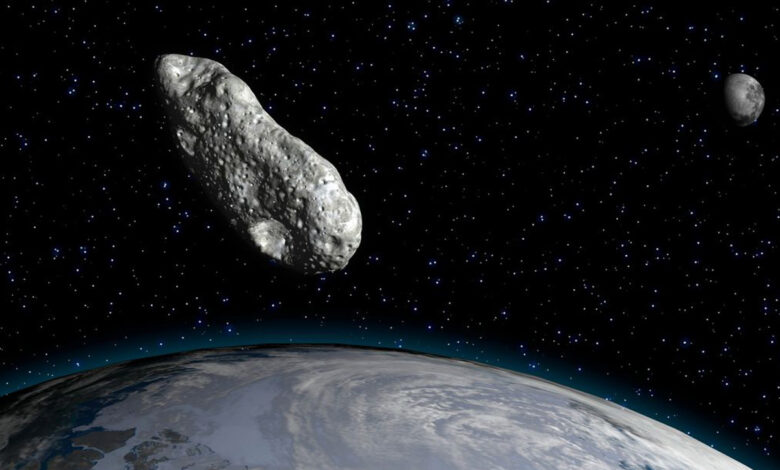
Earlier this week, Earth captured an asteroid that will accompany our planet on its way around the Sun for the next two months. The new moon is actually a near-Earth asteroid named 2024 PT5 and is only about 10 meters in diameter.
Asteroid 2024 PT5, which was trapped during a very close encounter with the Earth, will accompany the Earth for only 57 days and will finally continue to orbit the Sun in its normal orbit after leaving the influence of the planet on December 5.
The entrapment of a space rock around the Earth has set off a market of rumors on social networks. Some people have claimed that “Earth’s second moon” can be seen in the sky at certain times. While the “second moon” hypothesis can sound strange and exciting, 2024 PT5 will be a mostly invisible companion.
In fact, the trapped asteroid is almost 300,000 times smaller than the Earth’s moon, too small to be seen with the naked eye. Even commercial telescopes and binoculars are of little help in observing such a small object. Carlos de la Font Marcos, a professor at the Complutense University of Madrid, told Live Science:
This object is too small and faint to be seen with amateur telescopes and binoculars. However [قمر دوم زمین] It is within the brightness range of common telescopes used by professional astronomers.
So the only way to see Earth’s new small moon is to wait for researchers from professional observatories to release images of it. According to new research, 2024 PT5 likely originated in the Arjuna region, a secondary asteroid belt near Earth’s orbit. Due to the proximity of this asteroid to our planet, it is expected to come close again by January 2025, and then the next visit will be in 2055.
Read more:
Asteroid 2024 PT5 is not Earth’s first small moon. Our planet has trapped millions of temporary moons in its lifetime. The first small moon recorded by human observers was the 6-meter-diameter asteroid 2006 RH120, which orbited Earth for 18 months from 2006 to 2007.
A few years later, the space rock 2020 CD3 remained in Earth orbit for three years and left our planet in 2020. Due to the relatively easy travel to small asteroids from Earth, some researchers have suggested that these transiting moons be used as test samples for future exploration of mineral-rich asteroids.









